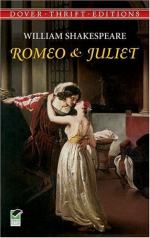|
This section contains 6,800 words (approx. 23 pages at 300 words per page) |

|
SOURCE: Nevo, Ruth. “Tragic Form in Romeo and Juliet.” Studies in English Literature 1500-1900 9, no. 2 (spring 1969): 241-58.
In the following essay, Nevo explains the uniquely Shakespearean approach to tragedy employed in Romeo and Juliet that depends on neither providence nor fate as the source of human suffering.
The plot of Romeo and Juliet stresses the accidental. The fortuitous meeting of Romeo and Benvolio with Capulet's illiterate messenger bearing the invitations he cannot decipher, the chance encounter between Romeo and Tybalt at a most unpropitious moment, the outbreak of the plague which quarantines Friar John, the meeting of Romeo and Paris at the Capulet tomb are instances which come at once to mind. Shakespeare, so far from mitigating the effect of unfortunate coincidence is evidently concerned to draw our attention to it. Bad luck, misfortune, sheer inexplicable contingency is a far from negligible source of the suffering and calamity...
|
This section contains 6,800 words (approx. 23 pages at 300 words per page) |

|


